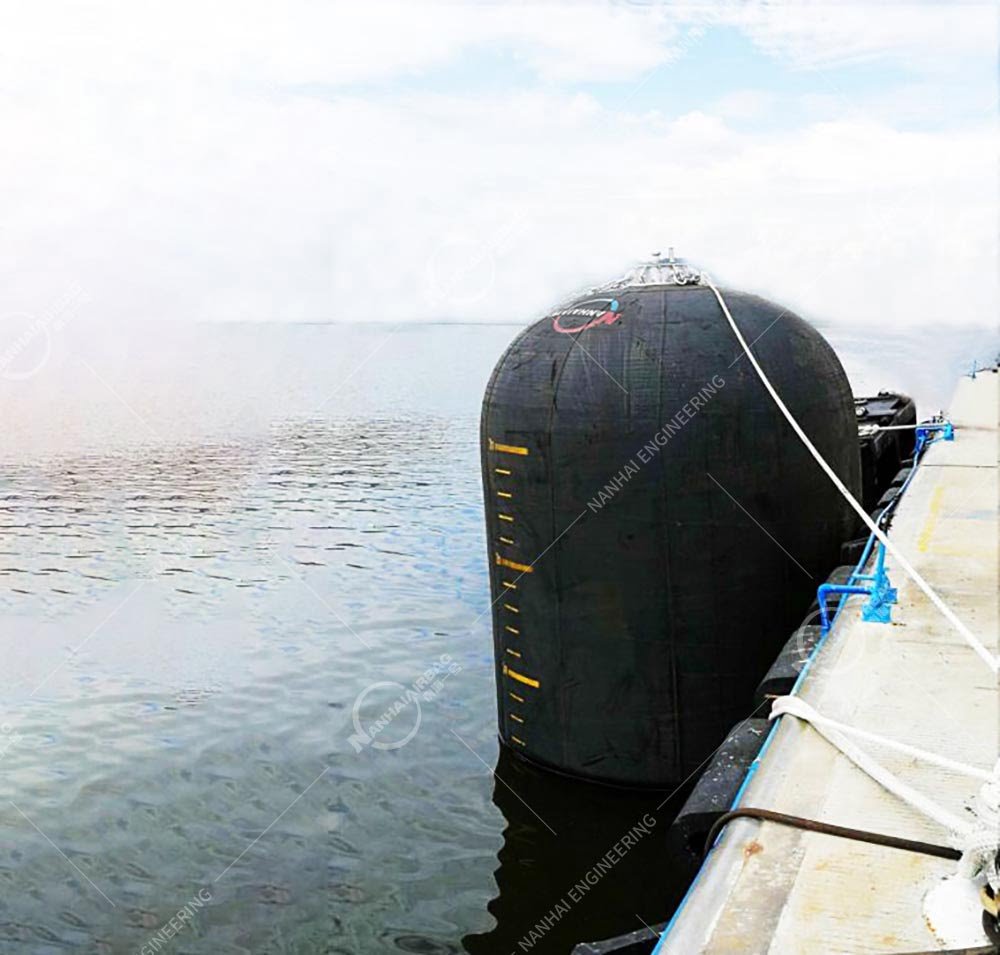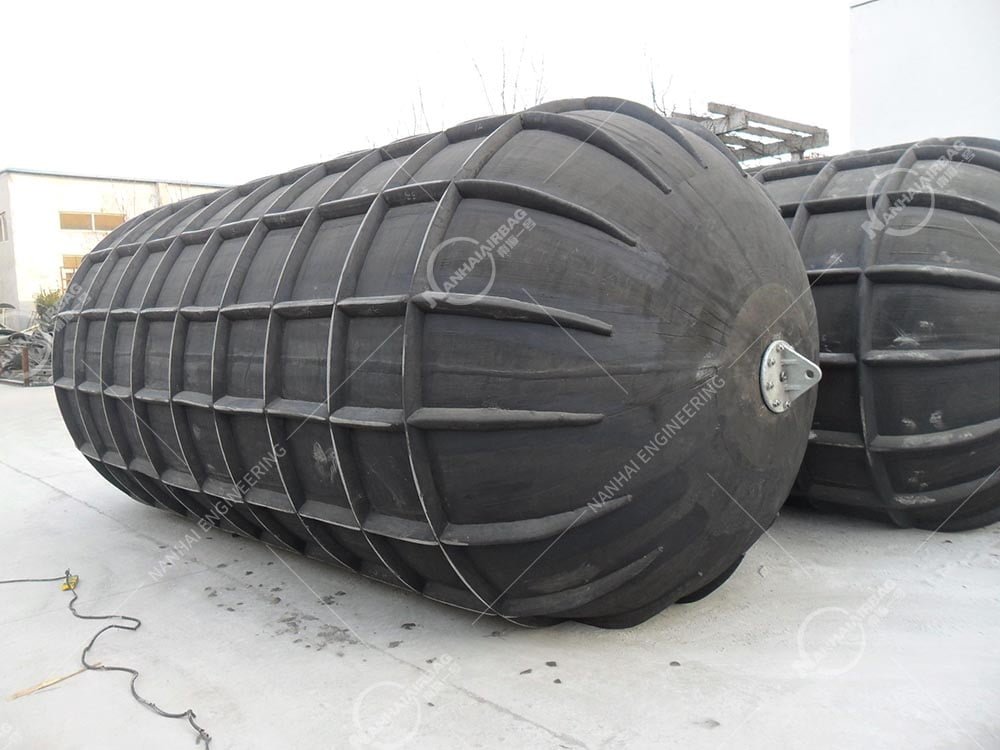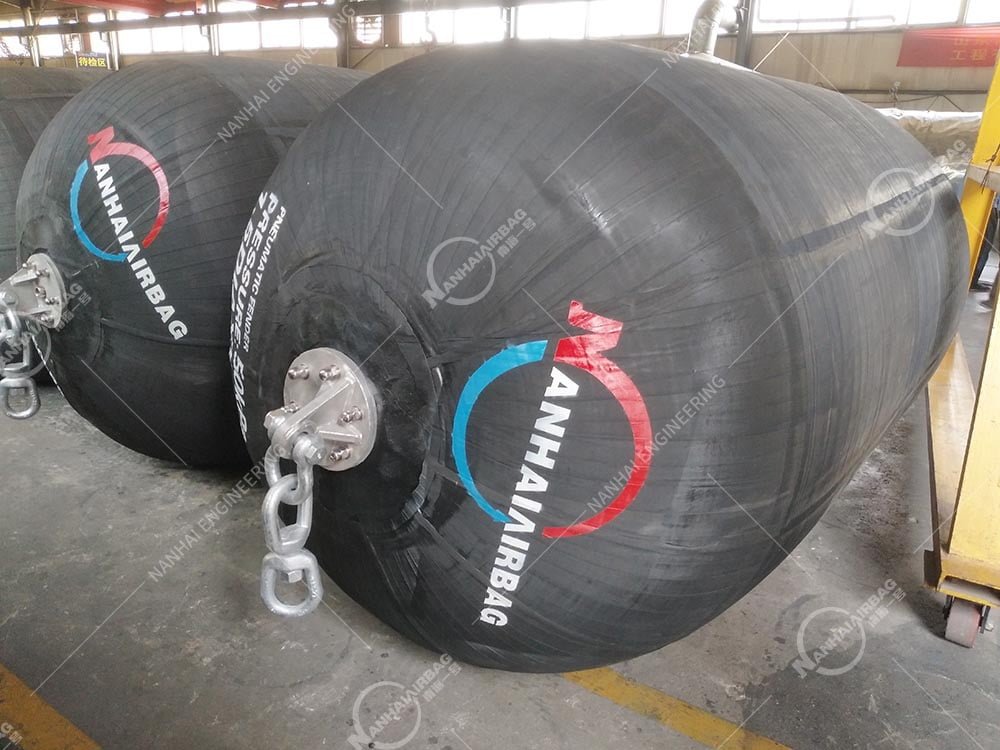By now, don’t you know the difference between pnuematic fender and yokohama fender ?
23/07/2024how to choose yokohama fender ?
24/07/2024Basic guide for buying a pneumatic fender
Help you to choose the best pneumatic rubber fender for you-An article to take you through pneumatic fender type, size, uses,price
In this article, we will not consider the problem from the perspective of the company, but based on the history of NANHAI serving customers for more than 20 years, from the perspective of customers, we will consider how to choose the most appropriate pnuematic fender and adapt to your local Marine environment. We will start from the adaptation types of pnuematic fender. Size, usage, and price, these elements help you get a simple idea of how to choose a pnuematic fender. Before starting this article, I would like to tell you that this article only involves pnuematic rubber fender, not Foam fender. Of course, if you want to involve more Marine products and customized solutions, you can contact us. We will contact you in time.
First of all, we would like to tell customers or companies who are confused and do not know how to purchase pnuematic fender, and then you will get a feasible and operational idea to help you get more opportunities on how to choose the most suitable yokohama fender in your local area. And help you to save yokohama pnuematic fender de while maintaining quality. We will help you understand pnuematic fender from four directions: pnuematic fendr types, pnuematic fender size, pnuematic fender uses, pnuematic fender price.
pneumatic fender types
Have you ever heard of pneumatic rubber fender or yokohama fender. To be honest, they're actually same produce and we have other names for them, For example yokohama rubber fender , floating pneumatic rubber fender, we can simply call it yokohama fender or pneumatic fender.Have you ever heard of pneumatic rubber fender or yokohama fender. To be honest, they're actually same produce and we have other names for them, For example yokohama rubber fender , floating pneumatic rubber fender, we can simply call it yokohama fender or pneumatic fender. Why is it called yokohama fender? Because it was originally invented in 1985 by a rubber products company in Yokohama, Japan, and they developed a set of testing standards for the industry. All products sold by experts were required to conform to this standard (ISO17357). This minimum standard pneumatic fender was later called yokohama fender. If you want to know about the history of yokohama, you can click here. Of course, at present, the pneumatic fender sold by NANHAI company far exceeds the standard of ISO17357, and even the performance is 60% of that of ISO17357 pneumatic fender. This video is a use of our real scenario.
The interior of the pnumatic fender is filled with high-pressure air. And it is easily deflated so that it can be easily relocated and debugged. Pneumatic fenders are used to absorb kinetic energy from a dock, dock wall or dock. Fenders can be applied to all types of vessels, from cargo ships to cruise ships, ferries and private yachts, and can prevent damage to ships and berthing structures.
Next, we will give you a brief introduction to the different types of pnuematic fender should be used in what place, so that you can choose according to the specific situation. At present, all kinds of pneumatic fender provided by NANHAI Company are basically all types of pneumatic fender in the industry, and we also customize different types of pneumatic fender for customers, including color, size, specifications and other aspects. We will highlight the four popular pneumatic fender types on the market: sling pneimatic fender, ribbed pneumatic fender, net tire pneumatic fender and Hydro pnuematic fender. The first three of its use is basically the same, but the style is different, the following is their picture show.
The use scenario of the first three types of pneumatic fender is basically the same, but because of the difference in performance, if your ship or dock is not very large, Consider sling pneumatic fender or Ribbed pneumatic fender, but if you have a large dock or ship, or a cargo ship, Or for engineering, you are recommended to use Net tire pneumatic fender. and hydro pneumatic fender is used in deep draft docks or luxury yachts, submarines and other directions. Of course, if you have sufficient funds, you can use this product in other scenarios, but in comparison, it is more recommended to use the pneumatic fender with the sheath of aircraft tires. Below are some of their respective introductions, so that you can better understand the type of pneumatic rubber fender.
Floating yokohama pneumatic fender type
Pneumatic fender sizes
Pneumatic fenders are crucial for safe ship-to-ship and ship-to-dock operations, and their sizes are determined based on the requirements of the ships and the type of operation. The ISO 17357 standard outlines the standard sizes of pneumatic fenders, but customization is often needed for specific applications. At present, NANHAI has taken over the 20-year experience list. Among all the lists, there are few ISO17357 standard sizes used, and most of the time, the company will customize the pneumatic fender according to the size of the ship and dock by our professional designers, and this is a free consultation in NANHAI.
Standard Sizes
The ISO 17357 standard provides a range of standard sizes for pneumatic fenders, combining 12 diameter sizes and 13 length sizes. This results in 17 standard sizes, each designed to accommodate different ship sizes and operational requirements.
Diameter and Length Ranges
Diameter Range: 0.5 m to 4.5 m
Length Range: 1 m to 12 m
Common Sizes for Ship-to-Ship Operations
3.3 m x 6.5 m: Suitable for larger vessels, providing substantial cushioning and protection during ship-to-ship transfers.
2 m x 3.5 m: More appropriate for smaller vessels or operations where space and maneuverability are factors.
Custom Sizes
While standard sizes are widely used, many manufacturers offer customization for non-standard sizes to meet specific operational or environmental conditions. Custom pneumatic fenders are tailored to fit unique ship sizes, docking configurations, or specific safety requirements.
Selecting the Right Size
When determining the appropriate pneumatic fender size for a particular ship or operation, consider:
Ship Size and Type: Larger vessels require bigger fenders to absorb more energy.
Operational Environment: Factors like water depth, dock size, and environmental conditions.
Safety Margins: Ensuring the fender can handle the impact forces expected in its operational scenario.
For customized solutions, consult with manufacturers who can design fenders that meet your exact specifications and operational needs.
YOKOHAMA PNEUMATIC FENDER 80 (METRIC) STANDARD SIZES
Yokohama pneumatic fender 80 (metric) standard sizes
Technical performance table
|
Nominal size diameter x length mm x mm |
Initial internal pressure kPa |
Guaranteed energy absorption (GEA) E |
Reaction force at GEA R |
Hull pressure at GEA P |
Safety valve setting pressure kPa |
Testing pressure kPa |
Approx. fender body weight kg |
Approx. weight of net kg |
Weight of sling type (type II) kg |
| 500 x 1000 | 50/80 | 8 | 85 | 174 | - | 250 | 24 | 160 | 34 |
| 700 x 1500 | 50/80 | 24 | 180 | 177 | - | 250 | 47 | 185 | 57 |
| 1000 x 1500 | 50/80 | 45 | 239 | 160 | - | 250 | 76 | 250 | 101 |
| 1000 x 2000 | 50/80 | 63 | 338 | 174 | - | 250 | 92 | 385 | 117 |
| 1200 x 2000 | 50/80 | 88 | 390 | 166 | - | 250 | 135 | 430 | 160 |
| 1350 x 2500 | 50/80 | 142 | 561 | 170 | - | 250 | 205 | 675 | 245 |
| 1500 x 3000 | 50/80 | 214 | 761 | 174 | - | 250 | 277 | 795 | 317 |
| 1700 x 3000 | 50/80 | 267 | 840 | 168 | - | 250 | 316 | 830 | 356 |
| 2000 x 3500 | 50/80 | 430 | 1150 | 168 | - | 250 | 413 | 1165 | 473 |
| 2000 x 4500 | 50/80 | 584 | 1560 | 179 | - | 250 | 488 | 1700 | 548 |
| 2500 x 4000 | 50/80 | 925 | 1815 | 180 | 230 | 300 | 1010 | 1745 | 1190 |
| 2500 x 5500 | 50/80 | 1317 | 2653 | 195 | 230 | 300 | 1230 | 2765 | 1460 |
| 3300 x 4500 | 50/80 | 1640 | 2476 | 171 | 230 | 300 | 1720 | 2650 | 2090 |
| 3300 x 6500 | 50/80 | 2532 | 3961 | 191 | 230 | 300 | 2200 | 3840 | 2570 |
| 3300 x 10,600 | 50/80 | 4281 | 6907 | 208 | 230 | 300 | 3030 | 6755 | 3520 |
| 4500 x 9000 | 50/80 | 6633 | 7551 | 192 | 230 | 300 | 4380 | 7365 | - |
| 4500 x 12,000 | 50/80 | 9037 | 10490 | 202 | 230 | 300 | 5330 | 9875 | - |
Note:
- Figures on the table comply with ISO 17357
- Weight of fender body and net may vary ±10%
- Special sizes are available on request simply
Pneumatic fender uses
Pneumatic fenders are crucial for preventing collisions between ships and effectively reducing berthing energy, thus avoiding permanent damage to both the hull and the dock's concrete structure. Yokohama fenders are especially well-suited for various maritime operations, including short-term port visits, cargo transfers, buoyancy assistance, and double berthing scenarios. They are typically installed using chains and shackles on pre-installed dock bases, allowing them to float horizontally and adapt to changing water levels due to tides.
In addition to protecting docks, Yokohama pneumatic fenders can be mounted on the sides of vessels to prevent collisions during sea docking operations. This is particularly important in ship-to-ship (STS) operations, which are common during the transfer of liquid cargo at sea. Pneumatic fenders also play a vital role in double berthing operations, where one ship is moored at a port while another docks alongside it. This setup facilitates quick and efficient cargo transfers, enhancing terminal efficiency.
Furthermore, pneumatic fenders can temporarily provide buoyancy to a vessel, helping to prevent grounding in shallow waters. This additional function ensures that vessels can navigate safely even in areas with limited depth.
Then we will give a specific application scenario of pneumatic fender to help you better understand the product, so as to help you make a judgment when choosing
Key Applications of Yokohama Pneumatic Fenders
Why Choose NANHAI Pneumatic Fenders?
NANHAI pneumatic fenders are renowned for their durability, flexibility, and effectiveness. Designed to meet diverse maritime needs, these fenders offer superior protection and operational versatility. Whether used for collision prevention, cargo transfer, double berthing, or buoyancy assistance, NANHAI fenders are a vital component in ensuring the safety and efficiency of maritime operations.
By investing in high-quality pneumatic fenders, maritime operators can enhance safety, protect valuable assets, and improve overall operational efficiency. For more information on customizing NANHAI pneumatic fenders to suit specific needs, consult with specialized manufacturers who can provide tailored solutions for your maritime requirements.
Pneumatic fender price
The price of pneumatic fenders is influenced by various factors, including production methods and material quality. These factors can significantly affect the cost and performance of the fenders.According to the summary of all orders received by NANHAI, only customization can save the cost relatively. We do not advocate using all the most expensive products, but can help you to save the cost of pneumatic fender to the greatest extent according to your actual environment and needs. This is our company's unique advantage, which cannot be compared with other companies.
Production Methods and Their Impact on Cost
Pneumatic fenders are primarily manufactured using two methods: the mold type and the winding type.
-
Mold Type: Molded pneumatic fenders are produced in a single, continuous piece, without any connection points. This method results in a more seamless and robust fender. The molding process generally requires higher initial investment due to the cost of manufacturing molds. Consequently, the price of molded fenders tends to be higher.
-
Winding Type: Winding type fenders are constructed by manually layering rubber sheets around a core. This method does not require molds, which helps reduce production costs. As a result, fenders produced using this technique are usually more affordable. However, they may have different performance characteristics compared to molded fenders.
Material Quality and Its Effect on Pricing
The rubber material used in pneumatic fenders must meet specific purity standards. High-quality rubber should have minimal impurities. Some manufacturers may choose lower-quality rubber with higher impurity levels to cut costs, leading to cheaper prices. This practice can compromise the durability and safety of the fenders.
When comparing prices, if you find significant price discrepancies between different suppliers, it's important to consider the quality of the materials used. Lower prices may indicate the use of inferior materials or less rigorous production processes.
Why Quality Matters
At NANHAI, we prioritize the quality of our pneumatic fenders. We use pure natural rubber with minimal impurities to ensure the durability and safety of our products. We believe that cutting corners to offer the lowest price ultimately compromises product quality and customer satisfaction.
Despite the lower prices offered by some competitors, we refuse to engage in unhealthy price competition. Our commitment is to provide high-quality, cost-effective pneumatic fenders that meet the highest industry standards. We understand the importance of reliable and durable fenders in maritime operations and strive to deliver products that offer real value to our customers worldwide.
In summary, while price is an important factor, it should not be the sole criterion when choosing pneumatic fenders. Evaluating the production methods and material quality is crucial to ensuring that you receive a product that meets your operational needs and safety standards. NANHAI remains dedicated to offering superior products and service, emphasizing that you truly get what you pay for.
Through our general analysis, I hope you can have some help in choosing pneumatic fender. If you want to know about customization or detailed scheme, you can consult us, We have a professional team to answer your questions. of course, all this is free.




